FARMS: THE MITES IN AGRICULTURE
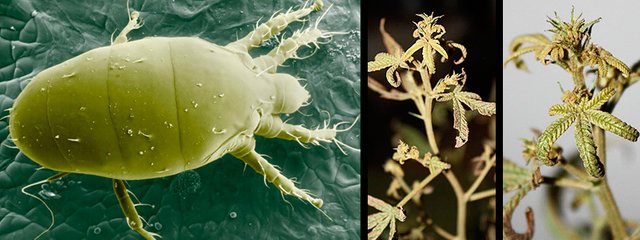
WHAT ARE THE MITES?
Acari or Acarina (from the Greek ακαρής akarés, "diminuto", "that does not cut") commonly denominated as mites, are a subclass of arachnids, although for a long time they were considered an order. There are almost 50,000 species described, and it is estimated that there are between 100,000 and 500,000 species that have not yet been found. Most mites are tiny and reach a few millimeters in length.
There are mites in terrestrial and aquatic environments, even in the marine environment. They are mostly predators, but there are phytophages, detritivores and parasites; Ticks are hematophagous and are vectors of numerous infectious diseases.

DESCRIPTION AND MORPHOLOGY
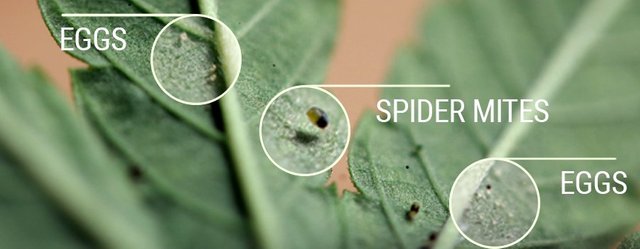
They belong to the Acariform order and are included in the Tetranychidae family.
Egg: they are usually rounded and somewhat flattened.
Larva: generally salmon-colored and rounded, it has three pairs of legs.
Nymph: the intermediate states between larvae and adults. They have four pairs of legs.
Adult: males and females are usually very mobile and may have different colors.

BIOLOGY
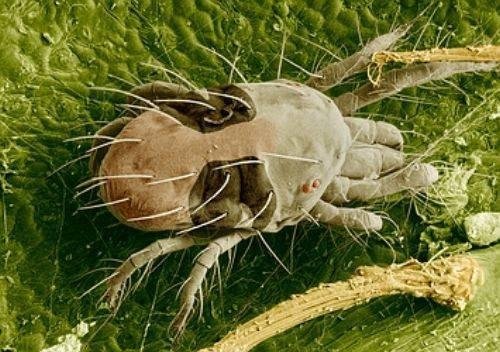
Reproduction:
The male fecundates the female after the emergency. The start does not start immediately after fertilization, but there is a period of "preovoposition" that varies with climatic conditions.The laying can be done in very varied sites preferring new leaves that have reached their full development and, above all, In the beam in the main nerve, it is usually sexual reproduction, although parthenogenetic reproduction can also occur.
Climatology:
The optimum conditions are high low temperatures, relative humidity. Its maximum population levels are from early or mid-September to the end of April.
Distribution:
It can be located in any part of the plants and in any of its evolutionary stages, preferably in the southern part and in the higher zones. Live on leaves, fruits and green branches. The female is usually found throughout the leaf, while the males and larvae, in certain crops, prefer the underside. The dispersal of the mite can be done by own means or through man, but the decisive factor is the wind.

WHAT ARE THE CROPS THAT ATTACK MITES?
The plants are lemon, orange, parchita, lechoza, vine, cotton, paprika, chile, tomato, guava, cassava, celery, apple, eggplant, etc.

DAMAGE TO MITES IN AGRICULTURE
You can find two types of mites, eriophids and tetraníquidos:
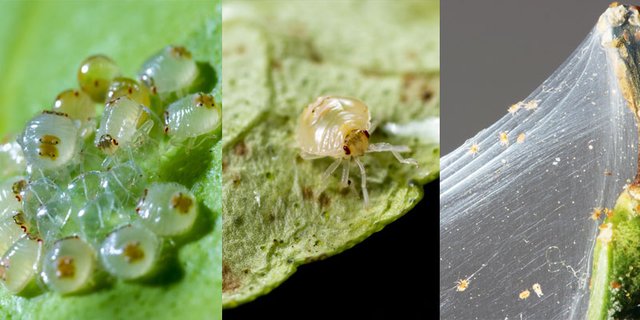
Eriophids
They have sexual reproduction, a size of about 0.1-0.2 mm, they are whitish in color. They only present two pairs of legs. They eat with five very small stilettos and inject saliva, but the mechanical damage is very small, however saliva can carry viruses. They need living tissue to live, never on dead tissue. They are pests of permanent plants.
Tetranichids
They are the most characteristic mites, with chelicerae through which they feed, and palps. The palps are sensory organs. They present four pairs of legs. They are suckers, the size is about 0.5 mm, damage that they produce is basically the emptying of cellular content. Yellowish pits are usually observed in most cases. In the case of cotton, the spots may be violet in color. The reproduction is sexual, they pass through two stages of larva and another of nymph. Combat with Tetradifon + Dicofol, Fembutestan. They are usually located on the underside of the leaves. We distinguish mainly two species:
Tetranychus urticae or red spider of fruit trees
They have two spots on both sides of the idiosome, it has a size of about 0.5 mm. It attacks more than 150 species of agricultural interest, both herbaceous and woody. It is very polyphagous. It is located mainly on the underside of the leaves and forms an abundant spider's web. The eggs are totally spherical. They go through two states of larva and another of nymph. It produces yellow pits in the orange tree, but it can also produce a continuous yellow spot. In the case of cotton, it produces a continuous reddish stain. In the case of lemon produces what is called lemon mustache (black spot). Winters in adulthood, in spontaneous vegetation.
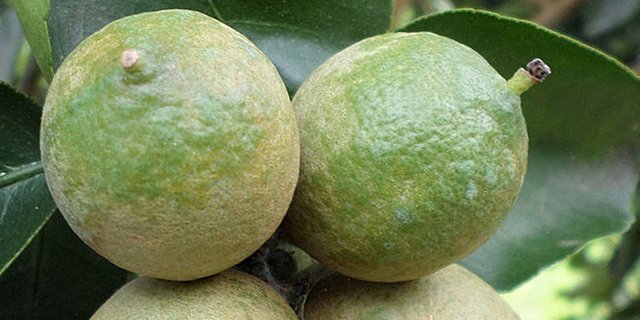
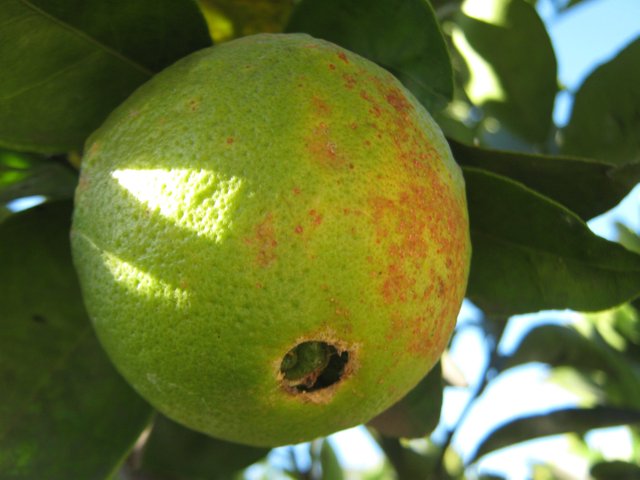
Panonychus ulmi or red fruit mite
It is one of the mites that most attacks the fruit trees, it is very polyphagous. They have white tubers with teak. The egg is very characteristic, is flattened by the poles and carries a kind of mast from which winds of wax that bind to the substrate arise. Hibernate in an egg state, crowded in the armpit buds, the larvae appear in spring and are located on the underside of the leaves, producing leaden discolorations on the leaves of fruit trees. These leaves end up drying and fall to the ground. It is a typical summer plague. The best time to treat it is when 70% of the eggs have been revived.
 .
.
CONTROL
Preventive and cultural measures:
Favor the proliferation of auxiliary insect populations. The presence of hedges serves to curb mite populations transported by the wind. On the other hand, in many plantations of fruit trees the importance of the vegetal cover and of the flora of the edges and ribazos (brambles) in harboring populations of phytoseiids that control mites has been proven. In this sense, to conserve the balance, it is considered important in the case of mowing the vegetal cover to do it by bands, avoiding mowing the whole cover at the same moment.
Biologic control:
Predators: Stethorus punctillum, Conwentzia psociformis, Chrysopa sp, Euseius stipulatus, Neoseiulus californicus, Amblyseius andersoni, Macrolophus caliginosus, Phytoseiulus persimilis, Amblyseius californicus.
If moisture falls below 70% in the microclimate surrounding the leaf for a prolonged period of time, the eggs of most predators dehydrate and do not hatch. However, although the relative humidity drops drastically, the microclimate that causes the transpiration of the plant around the leaf, generally, ensures an adequate level of humidity for the mite. Only in cases of pronounced necrosis of plant tissue, such as occurs with strong attacks of red spider or thrips, this microclimate can become a factor that limits the development of the predator. This is because the necrosis of the plant tissue decreases the rate of transpiration, which results in an increase in the temperature of the leaf and a lower humidity in the air layer that surrounds it.
Botanical control: (Extract of plants) Purín of nettles.
Chemical control in AE: In tree plantations it may be necessary in some cases to treat the winter eggs, which are in diapause with oils, to lower the spring populations. Mineral oils, sulfur and azadirachtin exercise good control over mites (do not mix oils and sulfur in any case). In the case of greenhouses with biological control programs, it is recommended to treat the mites with damp sulfur, directing the application to the foci or area of the plant with their presence (Aculops lycopersici in tomato), to interfere as little as possible in the populations of auxiliary insects.Sulfur burners installed in greenhouses have also proved very effective for the control of mites.
Intervention criteria: It is essential to monitor their presence at the end of spring and summer. In general, in trees it can be considered as a level to intervene that 20% of the leaves observed have mobile forms. Do not carry out applications in the case of the presence of phytoseiids (parasites), in the ratio of 1/2 of presence with respect to the mite.

For more information visit:
http://brendaly-concecuenciasporlosparacitos.blogspot.com/2011/02/danos-por-acaros.html
http://www.agro-tecnologia-tropical.com/acaros.html
https://es.wikipedia.org/wiki/Acari
If you got here ... Infinite thanks for reading me.
"God bless you and protect you"
